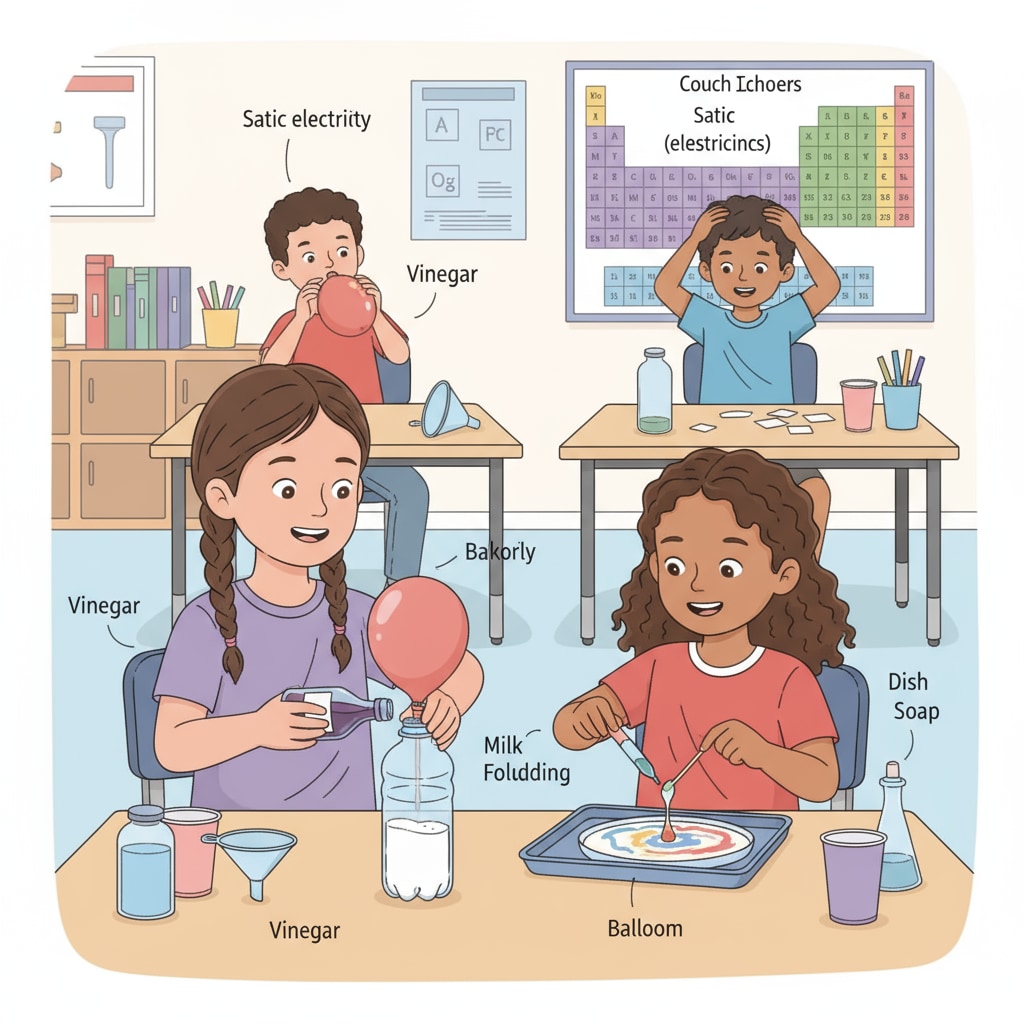Science fairs are an excellent way to introduce children to the world of scientific exploration. For parents and teachers of children in grades 1 – 4, guiding them through science fair projects can be both rewarding and educational. This guide will explore children’s experiments using simple, everyday items, all while adhering to scientific methods.

Spark Your Child’s Scientific Curiosity
Science is all around us, and getting children interested at a young age can set them on a path of lifelong learning. Using everyday items for experiments makes science more relatable and accessible for lower grade children. For example, you can conduct a simple experiment to show how plants grow. This hands-on approach will help them understand scientific concepts better. As a result, it will boost their enthusiasm for science.
Four Fun Experiments for Lower Grade Children
- Balloon Rocket Experiment: This experiment demonstrates the concept of force and motion. Blow up a balloon and attach a straw to it with tape. Thread a string through the straw and pull it tight. Let go of the balloon, and watch it zoom along the string. It’s a great way to introduce kids to the principles of physics.
- Rainbow Milk Experiment: Pour some milk into a shallow dish and add a few drops of food coloring. Then, dip a cotton swab in dish soap and touch it to the food coloring. The colors will spread and create a beautiful rainbow effect. This experiment shows how soap breaks the surface tension of milk.
- Homemade Volcano Experiment: Create a volcano model using a plastic bottle. Mix baking soda, vinegar, and some dish soap in the bottle. The reaction between baking soda and vinegar will cause a foamy eruption, teaching kids about chemical reactions.
- Plant Growth Experiment: Take two identical plants. Place one in a sunny spot and the other in a dark place. Water them equally. Observe how the plant in the sun grows taller and healthier, teaching children about the importance of sunlight for plants.

These experiments not only engage children but also teach them fundamental scientific concepts in an enjoyable way. By following these simple steps, children can learn the basics of scientific methods, such as making hypotheses, conducting experiments, and observing results.
Understanding the Judging Criteria
When participating in a science fair, it’s important to understand the judging criteria. Judges typically look for creativity, understanding of the scientific concept, and the ability to present the project clearly. For lower grade children, it’s about showing their enthusiasm and effort. Encourage them to explain their thought process and what they learned from the experiment. This way, they can shine at the science fair.
In conclusion, science fairs provide a wonderful opportunity for lower grade children to explore the world of science. Through fun children’s experiments and an understanding of scientific methods, they can develop a love for learning and discovery. So, get your child started on their scientific journey today!
Readability guidance: The article uses short paragraphs and lists to summarize key points. Each H2 section has a list to make it easier to understand. The proportion of passive voice and long sentences is controlled, and transition words are used throughout the text to enhance readability.


